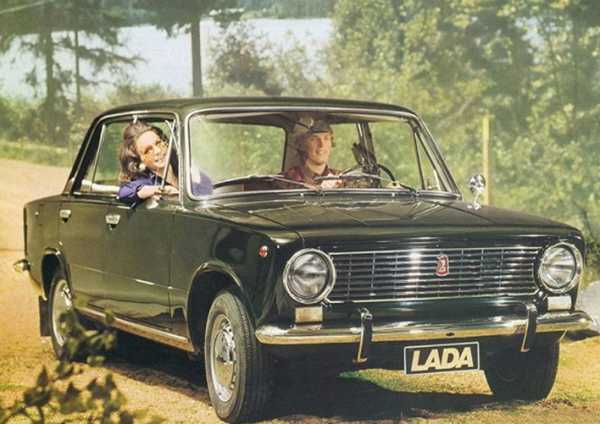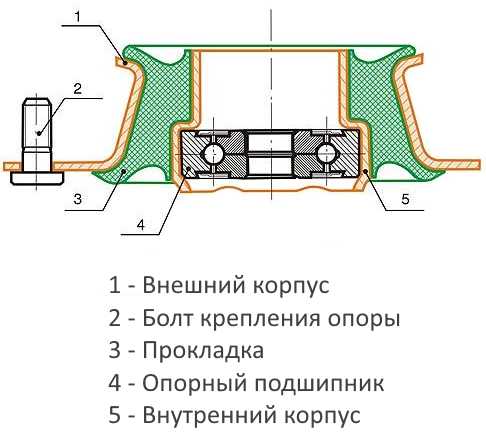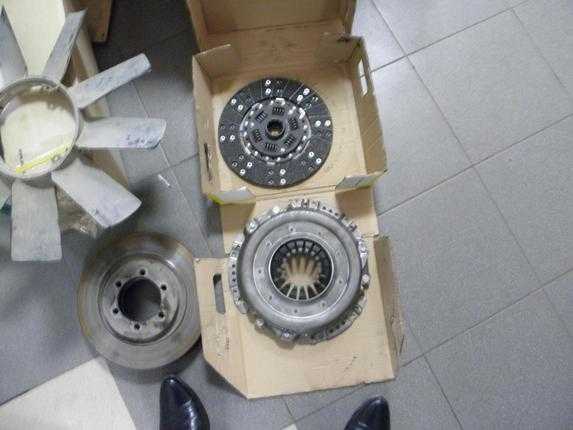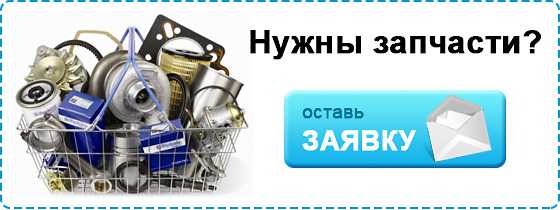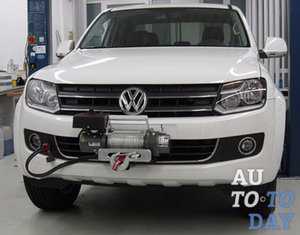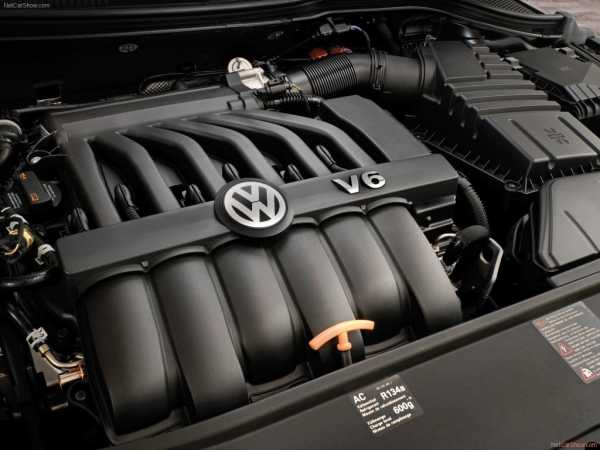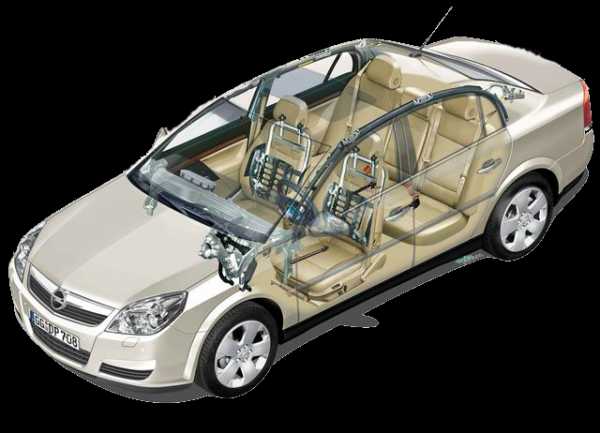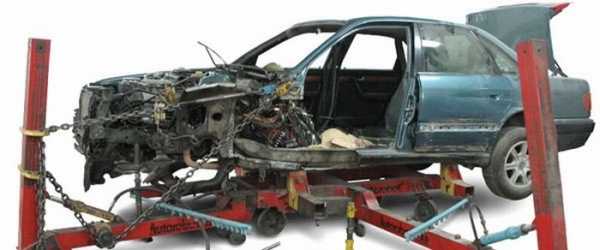Ремонт авто по английскому
Фразы на английском языке для общения в путешествии на автомобиле
 в прокате | на бензоколонке | в поездке | на парковке | в автосервисе
в прокате | на бензоколонке | в поездке | на парковке | в автосервисе | Где я могу купить карту автомобильных дорог? | >>>>>>>>>> |
| Правильно ли я еду в..? | >>>>>>>>>> |
| Простите, как мне доехать до..? | >>>>>>>>>> |
| Как выехать на скоростную дорогу? | >>>>>>>>>> |
| Как попасть на… шоссе? | >>>>>>>>>> |
| Сколько времени ехать до..? | >>>>>>>>>> |
| Куда ведёт эта дорога? | >>>>>>>>>> |
| Где здесь главная дорога? | >>>>>>>>>> |
| Какой налог за проезд по дороге? | >>>>>>>>>> |
| Какой налог за проезд по мосту? | >>>>>>>>>> |
| Где ближайшая бензоколонка? | >>>>>>>>>> |
| По этой дороге есть автомобильная стоянка? | >>>>>>>>>> |
| По этой дороге есть авторемонтная мастерская? | >>>>>>>>>> |
| По этой дороге есть мотель? | >>>>>>>>>> |
| По этой дороге есть ресторан? | >>>>>>>>>> |
| Здесь объезд | >>>>>>>>>> |
| Здесь поворот | >>>>>>>>>> |
| Здесь тупик | >>>>>>>>>> |
| Где можно взять машину напрокат? | >>>>>>>>>> |
| Где найти фирму по аренде автомобилей? | >>>>>>>>>> |
| Какие у вас есть автомобили? | >>>>>>>>>> |
| Какой автомобиль вы могли бы мне предложить? | >>>>>>>>>> |
| Меня интересует автомобиль марки… | |
| Меня интересует кабриолет | >>>>>>>>>> |
| Меня интересует джип | >>>>>>>>>> |
| Меня интересует купе | >>>>>>>>>> |
| Меня интересует микроавтобус | >>>>>>>>>> |
| Меня интересует седан | >>>>>>>>>> |
| Меня интересует хэч-бэк | >>>>>>>>>> |
| Мне нужна машина с автоматической коробкой передач | >>>>>>>>>> |
| Мне нужна машина с ручной коробкой передач | >>>>>>>>>> |
| Сколько стоит аренда машины в день? | >>>>>>>>>> |
| Какой размер аванса? | >>>>>>>>>> |
| Покажите мне расценки, пожалуйста | >>>>>>>>>> |
| Сколько бензина входит в стоимость проката? | >>>>>>>>>> |
| Сколько нужно платить за дополнительный пробег? | >>>>>>>>>> |
| Цена включает страховку? | >>>>>>>>>> |
| В стоимость проката включено страхование транспортного средства? | >>>>>>>>>> |
| Мне нужна страховка против всех рисков | >>>>>>>>>> |
| Я хочу оформить страховку на машину | >>>>>>>>>> |
| Я хотел бы взять эту машину напрокат на два дня | >>>>>>>>>> |
| Я хочу взять напрокат машину на три дня | >>>>>>>>>> |
| Я хочу взять напрокат машину на неделю | >>>>>>>>>> |
| Я хочу взять напрокат машину с жилым прицепом | >>>>>>>>>> |
| Чем я должен заправляться? | >>>>>>>>>> |
| Я должен вернуть машину с полным баком? | >>>>>>>>>> |
| В машине есть кондиционер? | >>>>>>>>>> |
| Мне нужно детское сиденье | >>>>>>>>>> |
| Вот мои водительские права | >>>>>>>>>> |
| Где ближайшая заправочная станция? | >>>>>>>>>> |
| Поблизости есть бензоколонка? | >>>>>>>>>> |
| У меня кончился бензин | >>>>>>>>>> |
| Заправьте, пожалуйста, машину | >>>>>>>>>> |
| Наполните весь бак | >>>>>>>>>> |
| Полный бак, пожалуйста | >>>>>>>>>> |
| Мне нужно … литров бензина | >>>>>>>>>> |
| Дайте мне, пожалуйста, двадцать литров бензина «супер» | >>>>>>>>>> |
| Дайте мне, пожалуйста, двадцать литров дизельного топлива | >>>>>>>>>> |
| Дайте мне, пожалуйста, бензина на сумму … | >>>>>>>>>> |
| Наполните мне, пожалуйста, канистру | >>>>>>>>>> |
| Помойте, пожалуйста, мою машину | >>>>>>>>>> |
| Проверьте, пожалуйста, масло и воду | >>>>>>>>>> |
| У вас самообслуживание? | >>>>>>>>>> |
| Простите, по этой дороге есть парковка? | >>>>>>>>>> |
| Где тут поблизости бесплатная парковка? | >>>>>>>>>> |
| Где тут поблизости платная парковка? | >>>>>>>>>> |
| Где тут поблизости подземная парковка? | >>>>>>>>>> |
| На какое время я могу здесь припарковаться? | >>>>>>>>>> |
| Сколько стоит час парковки? | >>>>>>>>>> |
| Где автомат для оплаты парковки? | >>>>>>>>>> |
| Где счётчик парковки? | >>>>>>>>>> |
| Где можно отремонтировать автомобиль? | >>>>>>>>>> |
| У меня случилась поломка в пути | >>>>>>>>>> |
| Машина сломалась | >>>>>>>>>> |
| Могли бы вы прислать мне механика? | >>>>>>>>>> |
| Можете вы взять меня на буксир? | >>>>>>>>>> |
| Мне нужен эвакуатор | >>>>>>>>>> |
| В машине что-то забарахлило | >>>>>>>>>> |
| Я хочу провести у вас техническое обслуживание моего автомобиля | >>>>>>>>>> |
| Вы механик? | >>>>>>>>>> |
| Вы можете починить машину? | >>>>>>>>>> |
| Вы сможете это починить? | >>>>>>>>>> |
| Поломка серьезная? | >>>>>>>>>> |
| С этой неисправностью можно ехать дальше? | |
| Сделайте что-нибудь, чтобы я смог доехать до… | >>>>>>>>>> |
| Сколько времени займет ремонт машины? | >>>>>>>>>> |
| Сколько примерно будет стоить ремонт? | >>>>>>>>>> |
| У вас есть запчасти? | >>>>>>>>>> |
| Ремонт покрывается моей страховкой? | >>>>>>>>>> |
| Я думаю, что не в порядке аккумулятор | >>>>>>>>>> |
| Я думаю, что не в порядке зажигание | >>>>>>>>>> |
| Я думаю, что не в порядке коробка передач | >>>>>>>>>> |
| Я думаю, что не в порядке сцепление | >>>>>>>>>> |
| Я думаю, что не в порядке тормоза | >>>>>>>>>> |
| Я думаю, что не в порядке… | >>>>>>>>>> |
| Могли бы вы закрасить эту царапину? | >>>>>>>>>> |
| Могли бы вы заменить свечи? | >>>>>>>>>> |
| Могли бы вы починить этот прокол? | >>>>>>>>>> |
| Могли бы вы сменить масло? | >>>>>>>>>> |
| Вы можете заменить фару? | >>>>>>>>>> |
| Двигатель не заводится | >>>>>>>>>> |
| Двигатель перегревается | >>>>>>>>>> |
| Мотор сильно вибрирует | >>>>>>>>>> |
| Руль вибрирует | >>>>>>>>>> |
| Передача работает неправильно | >>>>>>>>>> |
| Радиатор течёт | >>>>>>>>>> |
| Сигнал не работает | >>>>>>>>>> |
| Спустило колесо | >>>>>>>>>> |
| Проверьте давление в шинах | >>>>>>>>>> |
| Подзарядите, пожалуйста, аккумулятор | >>>>>>>>>> |
| Долейте тормозной жидкости, пожалуйста | >>>>>>>>>> |
| Почините карбюратор | >>>>>>>>>> |
| Что-то не в порядке с давлением масла | >>>>>>>>>> |
| Почините… | >>>>>>>>>> |
| Выпишите, пожалуйста, квитанцию | >>>>>>>>>> |
MAXCACHE: 0.5MB/0.04594 sec
po-anglijski.electrichelp.ru
" Техническое обслуживание и ремонт автомобильного транспорта"
Департамент образования и науки Брянской областиГАПОУ «Брянский техникум машиностроения и автомобильного транспорта имени Героя Советского Союза М.А. Афанасьева»
Методическое пособие
Для специальности 190631 « Техническое обслуживание и ремонт автомобильного транспорта»
Автор: Дунаева Галина Владимировна
Рассмотрено и одобренона заседании ЦК общих гуманитарных и
социально-экономических дисциплин ____________/Ю.Н. Крупенина
Протокол №______
«____» ___________2016 г.
Брянск, 2016
ПОЯСНИТЕЛЬНАЯ ЗАПИСКА
К методическому пособию по английскому языку для специальности «Техническое обслуживание и ремонт автомобильного транспорта» Пособие разработано в соответствии с требованиями Государственного образовательного стандарта и уровню подготовки выпускников средних специальных учебных заведений по дисциплине «Иностранный язык (английский).
Данное пособие содержит подборку текстов профессионально направленного содержания, что способствует овладению лексикой технической направленности. В методическое пособие включены тексты из истории появления автомобилей, устройство автомобиля, работы двигателя, виды наземного транспорта, движение в Лондоне, левостороннее движение в Лондоне, правила движения в России и другие. Кроме основных текстов представлены таблицы с набором лексических единиц по теме « Транспорт», которые способствуют активному усвоению тематического материала и использованию его в устной и письменной речи в соответствии с потребностями данного вида деятельности.
Предлагаемое пособие ставит своей целью обучение студентов профессиональной лексике, формированию коммуникативной компетенции, позволяющей общаться на английском языке на различные темы, в том числе в сфере профессиональной деятельности используя приобретённый словарный запас, а также способствует расширению кругозора студентов и повышению их интереса к изучению английского языка.
Automobiles
Automobiles or cars are one of the most amazing discoveries of the 20th century. They are thought to have completely changed modern society. They’ve had a huge impact on the way people live and work now. Automobiles or any other motor vehicles gave people the opportunity to move and travel faster. Using transport, people easily commute from one town to another to get to work. The history of automobiles started in 1886, when German inventor Karl Benz invented a motorized wagon to replace ordinary, animal-drafted carriages. First modern car was introduced in 1908 by Henry Ford. Today, there are thousands of cars which meet every person’s needs, from luxury types to practical . Apart from cars, people use public transportation for travel purposes, including trams, buses, mini vans, local trains, etc.
There are different opinions on automobiles and their impact. For example, some people think that they have improved our life, but some find them health dangerous and unnecessary. Modern equivalent of cars is the bicycle. First of all, it doesn’t have an engine and doesn’t need fuel to move. This has made a bicycle the most eco-friendly vehicle. Secondly, bicycles are not noise pollutants and they don’t block the roads. Thirdly, riding a bicycle keeps people fit and in good shape. However, there are millions of people who would never abandon cars as they provide comfort and convenience. They don’t depend on bad weather conditions, they let the passengers sit back and enjoy the ride, which was impossible in the 19th century when people relied on animals.
Some prominent people state that automobiles have improved the quality of life and economy in many countries. For example, with the appearance of cars the rate at which goods and services are transacted significantly increased. Other than that, many jobs, involving road construction, have been created. Social life has also been improved. Thanks to cars, people can visit each other at any time and stay as long as they wish. Public transport has limited hours of work. The economy is said to be improved due to reduced travel time and expenses. The future of car technologies is vague, although there are some advances being developed. The manufacturers work on hybrid and fully autonomous cars at the moment. Hybrid cars use two or more sources to move. Most commonly they are electric vehicles. Autonomous cars are driverless and they already exist in prototype.
THE HISTORY OF LAND TRANSPORT
Introduction
The word transport means to carry people or goods from place to place. It is also used for the vehicles that carry people or goods – for example, motor transport includes buses, lorries, motor coaches and motor cars. The American word for the same thing is transportation, and the remark “transportation is civilization” was made by an American, the motor-car manufacturer Henry Ford.
The history of transport is divided into two stages. The first stage is that in which all forms of transport depended directly on the power of men or animals or natural forces such as winds and current. The second stage began with the development of the steam engine, which was followed by the electric motor and the internal combustion engine as the main sources of power for transport.
Porters and Pack Animals
2.The most ancient people were probably wanderers. They did not live in settled homes because they did not know how to till the soil. As they moved from place to place they had to carry their goods themselves. The porters were usually the women, probably because the men had to be ready to beat off attacks by wild beasts or enemies. Even now, to carry the household goods is the job of women in backward wandering tribes.
The next step was the use of pack animals for carrying goods. The kind of animal used varied in different places, but the general idea was the same – the bundles or baskets were carried by the animals on their backs. The dogs, although too small to carry much, was probably one of the first transport animals used because it is so easily trained. Dogs are still to be trained for dragging sledges in the Arctic because of their light weight.
3.The next advance in land transport came with the invention of the wheel. The wheel at once led to the development of two-wheeled carts and four-wheeled wagons and carriages, but before these could be used for carrying goods over long distances, a system of roads was necessary. These roads had to be wide enough to take a cart and paved, for unless their surface was paved the wheels sank in and the cart stuck. In Britain, and also over much Europe, the first long-distance paved roads were made by the Romans, chiefly so that troops could be marched without delay from place to place. The roads made it possible to use wheeled traffic. However, when the Roman Empire collapsed, the roads gradually got into a very bad state.
4.There were two problems to be solved – first, how to make good roads, and, second, to decide who was to pay for them. In Great Britain these problems were solved in the 18th century. Stretches of roads were handed over to groups called trusts. The trusts borrowed money for repairing and improving the roads, paying it back from the sums they collected from road users. This method of paying for new roads and bridges is still used, especially in the United States.
Then it became possible to travel rather comfortably by coaches. In cities like London, rich people had their own carriages, while poor people went on horseback or walked. Then appeared carriages that could be hired for short distances. They correspond to the modern taxis. The word is short for taxi cab which in turn comes from the words taximeter and cabriolet. A cabriolet is a light two-wheeled carriage introduced from France in the 19th century. The taximeter is a mechanical device connected with the wheels which, by measuring the distance travelled, snows the fare due at any moment. It is also controlled by a clock so that waiting time too is charged for.
Inside the car
The use of motor-cars changes the life. People like to drive a car and cover long distances with comfort. If you are thinking of taking your car to England you should be familiar with the vocabulary of motoring and you should know about traffic rules in England. Let's have a look at the car. We are inside the car. There is a seat for the driver and four seats for passengers. All round the car there are windows to see out- except in the front. This is the windscreen and there are also things to sweep the rain off it. We call them the windscreen wipers .When we drive the car we steer with the steering wheel. If there are obstacles in the way we stop the car with the brake- we brake the car. When the way is clear to go again we accelerate to help us move off. The car has a gear-box and five gears. There is also a gear lever. We change gears by pushing the gear lever from one gear to the next. To help us to do this we have a foot-pedal. We call it the clutch. We put the clutch in to disengage the engine and we put the clutch out to make it drive again. When we want to stop the car we put on the hand-brake. To start the engine we switch on the ignition and press the starter. And lastly to change direction we signal with the indicators. With our hands we steer with the gear lever, and put on the hand-brake. With our feet we accelerate by using the accelerator, stop by using the foot-brake and change gear by using the clutch. Now let us look round the outside of the car. Front and rear come the bumpers to protect the bodywork. In the four comers are the wheels. The bonnet covers the engine. There is also the compartment to contain your luggage , the tools for the car and the spare wheel. We call this compartment the boot. But why do we need a spare wheel? When a tire goes flat all the air comes out of it because it has a puncture. So we lift the car on a jack, change the wheel and drive on. The main part of the engine consists of the cylinders and valves. Air and petrol go into the engine by means of the carburetor. The petrol reaches the carburetor from the petrol tank through the action of the petrol pump. The mixture is ignited by an electric spark from one of the ‘plugs’. The electricity is stored in the battery and battery is change by the dynamo. The engine is often cooled by water from radiator and lubricated by oil. The exhaust gases from the engine go away through a pipe. To control the operation of the engine we have a speedometer and an oil pressure gauge, a thermometer and an ammeter to see if the dynamo charges the battery or not. These are the basic instruments. At last what do we get? We get a lot of things. We have the steering-how to keep the car straight or make it turn. We have the brakes-how to stop the car and engine-how to make it go.
London Traffic.
London is so large that visitors must learn to use buses and the underground to get about. London taxis are too expensive for any but the rich. You can get a map of the underground and the bus routes at any ticket office. The word "Underground" across a large circle shows you where the stations are. The London underground is called the "tube". Bus stops are marked clearly. In the suburbs buses do not stop unless there are passengers who wish to get on or off. These stops are marked "Request Steps".
Inside some buses you will see the notice: "Please, state your destination clearly and have the exact fare ready." It is easy enough to tell the conductor where you want to go to, but not always possible to have the exact fare. The conductor will always give you the change. The London buses are very large. They have seats both upstairs and downstairs. English children like to sit on the front seats of a big London bus. They can see everything that is happening in the streets. Here are some of the things you may hear on a bus in London: "Fares, please." "Four pence, please." "Full up inside; plenty of seats on top." "Standing room only." "No, sir, this bus does not go to Victoria Station." "You want a number 11." "No more seats on top; five seats inside." In Great Britain traffic keeps to the left. Motor-cars, buses and cyclists must all keep to the left side of the road. In most other countries traffic keeps to the right. There is heavy traffic in London and you must observe traffic rules.
Travelling. Means of Transport.
People began to travel ages ago. The very first travelers were explorers who went on trips to find wealth, fame or something else. Their journeys were very dangerous but still people keep on going to the unknown lands.
Nowadays it is not as dangerous and much more convenient. Do you want to go somewhere? Hundreds of companies are there to help you. They will take care about your tickets and make all the reservations needed. You don't speak the language of the country you go to? There are interpreters that will help you. With modern services you can go around the world. You can choose the means of transport you like: plane, train, ship, bicycle or you can travel hiking.
Of course, travelling by air is the fastest and the most convenient way, but it is the most expensive too.
Travelling by train is slower than by plane, but it has its advantages. You can see much more interesting places of the country you are travelling through. Modern trains have very comfortable seats. There are also sleeping cars and dining cars which make even the longest journey enjoyable. Speed, comfort and safety are the main advantages of trains and planes. That is why many people prefer them to all other means.
Travelling by sea is very popular. Large ships and small river boats can visit foreign countries and different places of interest within their own country.
As for me, I prefer travelling by car. I think it's very convenient. You needn't reserve tour tickets. You needn't carry heavy suitcases. You can stop wherever you wish, and spend at any place as much time as you like.
Public Transport
To my mind the best way to travel along the city is to walk. When you go on foot, you do not depend on any kind of transport. You can observe the beauty of the buildings and landscapes wandering along the streets, you can go anywhere you like. These are the advantages. But, of course, the disadvantages of foot walks are the time you spent while walking.
If you are short of time and you are in a hurry, it is better to take advantage of any means of public transport. If you live not far from the underground, I advise you to use this mean of transport. First of all it's the fastest. Underground trains run every 3 to 5 minutes. It is also the most reliable type of transport.
With trams, trolley-buses and buses, there are lots of things that may interfere with their normal operations. But all years I have been travelling by underground it has never let me down.
As for the fare, it’s a little more expensive than trams and trolley-buses but cheaper than most buses and shuttle minibuses (route taxis). The only problem with the underground that it does not cover the whole city. But every metro station has good trolley-bus, bus and shuttle minibus connections.
You can also travel along the city by car if you have one. But the traffic in the city is very heavy, especially during the day time. There are a lot of traffic jams on the roads, so maybe it is more convenient to go by underground.
If you want to reach the place of destination without any problems and in a short period of time you can order a taxi by telephone. But bear in mind that it can be rather expensive. I wish you to have a good time and nice impressions of the city.
London Traffic.
London is so large that visitors must learn to use buses and the underground to get about. London taxis are too expensive for any but the rich. You can get a map of the underground and the bus routes at any ticket office. The word "Underground" across a large circle shows you where the stations are. The London underground is called the "tube". Bus stops are marked clearly. In the suburbs buses do not stop unless there are passengers who wish to get on or off. These stops are marked "Request Steps".
Inside some buses you will see the notice: "Please, state your destination clearly and have the exact fare ready." It is easy enough to tell the conductor where you want to go to, but not always possible to have the exact fare. The conductor will always give you the change. The London buses are very large. They have seats both upstairs and downstairs. English children like to sit on the front seats of a big London bus. They can see everything that is happening in the streets. Here are some of the things you may hear on a bus in London: "Fares, please." "Four pence, please." "Full up inside; plenty of seats on top." "Standing room only." "No, sir, this bus does not go to Victoria Station." "You want a number 11." "No more seats on top; five seats inside." In Great Britain traffic keeps to the left. Motor-cars, buses and cyclists must all keep to the left side of the road. In most other countries traffic keeps to the right. There is heavy traffic in London and you must observe traffic rules.
Technician - mechanic. Driver. You will be a technician-mechanic of the automobile industry. Technician –mechanic can work in technical-service stations, motor-transport depots or garage. They may work at any automobile enterprise. The main task of a mechanic is to repair cars, trucks and buses. After finishing our technical school you will be able to repair and to drive cars and trucks. You may work as a driver. The profession of driver is very necessary and useful. It is the profession with a wide range of application. Every day drivers transport many passengers and loads. Drivers help us to get about the town. They bring to the shops the goods we need. They take the sick people to the hospitals or to the doctors. The profession of driver is dangerous. Anything can happen during a trip and driver must be very careful and attentive. He must know and observe traffic rules in order not to meet with an accident. The profession of driver is very interesting. Driver visits many interesting places; he sees many interesting things and meets many interesting people.
Начало формы
Конец формы
The Early Days of Automobile
1. One of the earliest attempts to propel a vehicle by mechanical power was suggested by Isaac Newton. But the first self-propelled vehicle was constructed by the French military engineer Cognate in 1763. He built a steam-driven engine which had three wheels, carried two passengers and ran at maximum speed of four miles. The carriage was a great achievement but it was far from perfect and extremely inefficient. The supply of steam lasted only 15 minutes and the carriage had to stop every 100 yards to make more steam.
2. In 1825 a steam engine was built in Great Britain. The vehicle carried 18 passengers and covered 8 miles in 45 minutes. However, the progress of motor cars met with great opposition in Great Britain. Further development of the motor car lagged because of the restrictions resulting from legislative acts. The most famous of these acts was the Red Flag Act of 1865, according to which the speed of the steam-driven vehicles was limited to 4 miles per hour and a man with a red flag had to walk in front of it.
Motoring really started in the country after the abolition of this act.
3. In Russia there were cities where motor cars were outlawed altogether. When, the editor of the local newspaper in the city of Uralsk bought a car, the "governor issued these instructions to the police: "When the vehicle appears in the streets, it is to be stopped and escorted to the police station, where its driver is to be prosecuted."
4. From 1860 to 1900 was a period of the application of gasoline engines to motor cars in many countries, The first to perfect gasoline engine was N. Otto who introduced the four-stroke cycle of operation. By that time motor cars got a standard shape and appearance.
In 1896 a procession of motor cars took place from London to Brighton to show how reliable the new vehicles were. In fact, many of the cars broke down, for the transmissions were still unreliable and constantly gave trouble.
The cars of that time were very small, two-seated cars with no roof, driven by an engine placed under the seat. Motorists had to carry large cans of fuel and separate spare tires, for there were no repair or filling stations to serve them.
After World War I it became possible to achieve greater reliability of motor cars, brakes became more efficient. Constant efforts were made to standardize common components. Multi-cylinder engines came into use, most commonly used are four-cylinder engines.
5. Like most other great human achievements, the motor car is not the product of any single inventor. Gradually the development of vehicles driven by internal combustion engine - cars, as they had come to be known, led to the abolition of earlier restrictions. Huge capital began to flow into the automobile industry.
From 1908 to 1924 the number of cars in the world rose from 200 thousand to 20 million; by 1960 it had reached 60 million! No other industry had ever developed at such a rate.
6. There are about 3,000 Americans who like to collect antique cars. They have several clubs such as Antique Automobile Club and Veteran Motor Car Club, which specialize in rare models. The clubs practice meetings where members can exhibit their cars. Collectors can also
advertise in the magazines published by their clubs. Some magazines specialize in a single type of car such as glorious Model "T". A number of museums have exhibitions of antique automobile models whose glory rings in automobile history. But practically the best collection -100 old cars of great rarity - is in possession of William Harrah. He is very influential in his field. The value of his collection is not only historical but also practical: photographs of his cars are used for films and advertisements.
7. In England there is the famous "Beaulieu Motor Museum" - the home for veteran cars.
The founder of the Museum is Lord Montague, the son of one of England’s motoring pioneers, who opened it in 1952 in memory of his father. Lord Montague’s father was the first person in England to be fined by the police for speeding. He was fined 5 pounds for going faster than 12 miles per hour!
In the Museum's collection there is a car called the Silver Ghost which people from near and far go to see. It was built by Rolls-Royce in 1907, and called the Silver Ghost because it ran so silently and was painted silver.
There is a car called The Knight. It is the first British petrol-driven car. Its top speed was only 8 miles per hour! In the Museum there is also a two-seater car built in 1903.
THE ENGINE
1. The engine is the source of power that makes the car move. It is usually called an internal combustion engine because gasoline is burned within its cylinders or combustion chambers. Most automobile engines have six or eight cylinders.
2. The operating cycle of the four-stroke engine can be divided into four strokes. The upper limit of the piston movement is called the top dead centre. The lower limit of piston movement is called the bottom dead centre. A stroke is the piston movement from the top dead centre to the bottom dead centre, or from the bottom dead centre to the top dead centre . In other words, the piston completes a stroke each time it changes the direction of its motion.
3. Where the entire cycle of events in the cylinder requires four strokes (two crankshaft revolutions), the engine is called a four-stroke cycle engine. The four strokes are: intake, compression, power and exhaust.
4. Two-cycle engines have also been made, and in such engines the entire cycle of events is completed in two strokes or one revolution of the crankshaft.
5. On the intake stroke the intake valve is opened. The mixture of air and vaporized gasoline is delivered into the cylinder through the inlet valve. On the compression stroke the inlet valve is closed so that the mixture can be compressed. On the power stroke both valves (inlet and exhaust) are closed in order to rise pressure during the mixture combustion. On the exhaust stroke the exhaust valve is opened to exhaust the residual gas.
Why we drive on the left in the UK
The “ rule of the road” in mainland Europe and the majority of countries in the world, including the United States , is “ to drive on the right”.In the United Kingdom and some of her former dominions: Australia, New Zealand, Kenya, Zambia, South Africa, Zimbabwe, some Caribbean Islands including Barbados and St Lucia, India and Pakistan and the Mediterranean island of Malta, the rule of the road remains to drive on the left. This also applies in Japan and Thailand.The origin of this rule dates back to how people travelled in feudal societies. As most people are right-handed, it made sense to carry any protective weapon in this hand. When passing a stranger on the road, it would be safer to walk on the left, so ensuring that your weapon was between yourself and a possible opponent. Knights would hold their lances in their right hand , therefore passing on each others' left.Revolutionary France changed this historic practice , as part of its social rethink. Their military general and Emperor Napoleon Bonaparte was left- hand , therefore his armies had to march on the right , so he could keep his sword arm between him and the advancing enemy. From that time any part of the world that was colonized by the French would travel on the right, and the rest would remain travelling on the left.
Traffic rules and signs.Traffic rules are international nowadays. However , special regulations valid for one country only are also to be taken into consideration Traffic rules in Russia .1) Traffic in Russia is on the right-hand side of streets and roads with the traffic way wide enough for several cars moving abreast in one direction . It is forbidden to drive in the left- hand lane if the right-hand lane is free.
2) The driver is responsible for the condition of his car, and in particular the reliability of his brakes , the steering , the tires and the lights and indicators on his car.
3) The driver must conduct the car he is driving in such a manner as not to cause danger to, or obstruct the movements of another machine , be alert and keep to the route he is driving on .
4) While driving in traffic , the driver must observe and strictly adhere to road sings , signals and traffic lights, and also comply with the orders of traffic inspectors ( either in uniform , or with an arm- band on his left arm and a regulation baton in his hand )
5) Before making a left or right turn , a complete turn , accelerating , stopping , or making any other maneuvers which may alter his position in the line , the driver must give warning by signaling not less than five seconds before he starts the particular maneuver.
6) Horn signaling may be used only outside city limits. Only in case of emergency or in a thick fog , may there be an exception to this rule.
7) Careful attention must be paid to warning signals of special service car ( fire engines , ambulances , etc.) which have the right of way .
8) The speed is limited by the driver according to the condition of the road on which he is driving , visibility and also the intensity of traffic and the number of pedestrians . Upon the slightest warning of danger , he must lower his speed or stop the car . The speed limit in cities , towns and villages is 60 km and hour . On some roads speed limit is increased up to 110 km as shown by the corresponding sign.
9) It is forbidden to pass the car in front by driving in the lanes of the oncoming traffic , at road or street crossings and pedestrian crossings , on bridges and also before warning signs.
10) It is forbidden to stop at the left- hand side of the street or road , except in narrow streets where vehicular traffic from both directions passes along a single lane.
11) At non- regulated crossings, the traffic on the main street has the right of way . At street or road junctions of equal importance the car coming from the right has the right of way.
12) At any street junctions of equal importance trams have the right of way irrespective of their direction .
13) Where there are traffic lights , the traffic in any direction may move only when the green lights are on When making a turn , the driver must allow pedestrians to cross the street when the green lights are on .
14) If the traffic light contains additional lights, a turn may be made only when the signal of a green arrow lit up . While waiting for this signal , the car must wait at the “STOP” line.
15) When making a right or left turn cars moving in the same direction or in the opposite direction have the right of way , likewise those cars making a right turn from the opposite direction .
Лексика по теме: « Транспорт»
парковка
crossroad
['krɔ:s‚rəʋd]
перекресток
highway
[’haɪ‚weɪ]
шоссе
cabstand
[ ˈkæbræŋk ]
стоянка
main
[meɪn]
магистраль
helmet
['helmɪt]
каска, шлем
sidewallk
['saɪd‚wɔ:k]
тротуар
Metro
['metrəʋ]
метро
traffic lights
['træfɪk laɪt]
светофор
station
['steɪʃən]
станция
transit
['trænsɪt]
транзит
component
[kəm'pəʋnənt]
деталь
boot
[bu:t]
багажник
chassis
[ ˈʃæsɪ ]
шасси
parking place
[’pɑ:rkɪŋ pleɪs]
стоянка
cowl
[kaul]
капот
pedestrian
[pə'destrɪən]
пешеход
ignition
[ıg'nıʃən]
зажигание
refuelling
[ri:'fju:əl ɪŋ]
автозаправка
carburettor
[ˈkɑːbjʊretə]
карбюратор
brake
[breɪk]
тормоз
motor
['məʋtər]
мотор
bumper
[ ˈbʌmpə ]
бампер
pedal
['pedəl]
педаль
cab
[kæb]
кабина
piston
[pʲɪs'ton]
поршень
speedometer
[spiːˈdɔmɪtə]
спидометр
semaphore
семафор
trunk
[trʌŋk]
багажник
switch
[swɪtʃ]
стрелка
tyre
['taɪər]
шина
marine
[mə’ri:n]
флот
muffer
[ˈmʌflə]
глушитель
wheel
[wi:l]
колесо, руль
sump
масленый поддон
body
['bɒdɪ]
кузов
sedan
sɪˈdæn]
седан
cabriolet
[ ˌkæbrɪəuˈlet ]
кабриолет
berth
[bə:θ]
спальное место
hatch-back
a driving licence
[ˈhætʃbæk]
[ˈlaɪsəns]
хетчбек
водительские права
car
[kɑ:]
вагон
van
[væn]
фургон
compartment
[kəm'pɑ:rtmənt]
купе
universal
[‚ju:nə’vɜ:rsəl]
универсал
anchor
['æŋkər]
якорь
barrier
[ bæriə(r) ]
шлагбаум
aqualung
[ ˈækwəlʌŋ ]
акваланг
taxi
[’tæksɪ]
такси
bay
[beɪ]
бухта
platform
[’plætfɔ:rm]
платформа
harbor
[’hɑ:bə]
гавань
cable
['keɪbəl]
цепь
hold
[həʋld]
трюм
canvas
['kænvəs]
паруса
jetty
[ ̈ɪˈdʒetɪ ]
пристань
compartment
[kəm'pɑ:rtmənt]
отсек
moorage
[mrˈɪdʒ]
причал
deck
[dek]
палуба
overboat
[ ˈəuvəbɔd ]
за борт
buoy
[bɔɪ, 'bu:ɪ]
буй
mast
[mæst]
мачта
stern
[stɜ:rn]
корма
master
['mæstər]
капитан
water craft
[ ˈwɔ:tə krɑ:ft ]
суда, лодки
scull
[skʌl]
весло
boat
[bəʋt]
шлюпка
sluice
[slu:s]
шлюз
ferry
['ferɪ]
паром
dead – end street(амер.) blind alley( англ)
[blaɪnd] [ˈælɪ]
тупик
Motoway
seatbelt
автомагистраль
трасса
ремень безопасности
Основные виды транспорта
автомобиль
train
[treɪn]
поезд
bulldozer
['bulˌdəuzə]
бульдозер
Car,automobile
motorcar
[kɑ:][ˈɔ:təməubi:l]
автомобиль
bus
[bʌs]
автобус
landrover
[lænd 'rəuvə]
вездеход
сab ( амер )
taxi ( англ )
[kæb]
[ˈtæksɪ]
такси
Truck(амер.)
Lorry( англ.)
[trʌk]
['lɔ:rɪ]
грузовой автомобиль
catafalque
[ ˈkætəfælk ]
катафалк
petrol tanker
[’petrəl tæŋk]
бензовоз
combine
[kəm'baɪn]
комбайн
push-cycle
[ʹpʋʃ͵saık(ə)l]
самокат
dust-cart
[dʌst kɑ:rt]
мусоровоз
tram
[træm]
трамвай
excavator
['ekskəveɪtə]
экскаватор
trolley bus
['trɒlɪ‚bʌs]
троллейбус
loader
[ ˈləudə ]
погрузчик
jeep
[dʒi:p]
джип
sedan
[sɪˈdæn]
седан
diesel locomotive
[ˈdiːzl ‚ləʋkə’məʋtɪv]
тепловоз
motor bike
['məʋtər‚baɪk]
мопед
electric locomotive
[ɪ’lektrɪk ‚ləʋkə’məʋtɪv]
электровоз
motorcycle
['məʋtər‚saɪkəl]
мотоцикл
locomotive
[‚ləʋkə’məʋtɪv]
локомотив
electrotrain
[ɪ’lektrəʋ treɪn]
электропоезд
steam locomotive
[sti:m ‚ləʋkə’məʋtɪv]
паровоз
hand car
[hænd kɑ:]
дрезина
suburban train
[sə'bɜ:rbən treɪn]
электричка
local train
[’ləʋkəl treɪn]
пригородный поезд
tram
limousine
[træm]
['lɪmə‚zi:n]
трамвай
лимузин
bicycle
[’baɪsɪkəl]
велосипед
skateboard
['skeɪt‚bɔ:d]
скейтборд
Морской
dinghy
[ ˈdɪŋɡɪ ]
Мотор.лодка
tanker
[tæŋkə]
танкер
icebreaker
[ ˈaɪsˌbreɪkə ]
ледокол
tow
[təʋ]
буксир
steamship
['sti:mʃɪp]
пароход
raft
[ræft]
плот
steam-ship
['sti:mʃɪp]
теплоход
sailer
[’seɪlər]
парусник
yacht
[jɒt]
яхта
-
-
-
Воздушный
aviation
[‚eɪvɪ'eɪʃən]
авиация
plane
[pleɪn]
самолет
aerobus
[ eʹ(ə)rəʋ bʌs]
аэробус
hang-glider
[hæŋ'glaɪdə]
дельтаплан
helicopter
['helə‚kɒptər]
вертолет
Fighter
[͵faıtə ]
истребитель
Список литературы:
1.Голубев А.П., Балюк Н.В., Смирнова И.Б. Английский язык: учебник для студ. учреждений сред. проф. образования. — М., 2014.
2. И. П. Агабекян. Английский язык. Среднее профессиональное образование. – М., 2015.
Интернет – ресурсы:
http://study-english.info/vocabulary-car.php
http://www.jobmonkey.com/driveaway/driveaway_jobs_dispatcher/
http://english.mn.ru/english
http://www.whitehouse.gov
http://www.bbc.co.uk/home/today/index.shtml
http://www.washingtonpost.com
infourok.ru
салон автомобиля - Перевод на английский - примеры русский
На основании Вашего запроса эти примеры могут содержать грубую лексику.
На основании Вашего запроса эти примеры могут содержать разговорную лексику.
КОНСОЛЬНАЯ ПЕРЕГОРОДКА ДЛЯ РАЗМЕЩЕНИЯ В САЛОНЕ АВТОМОБИЛЯ И САЛОН АВТОМОБИЛЯ
CONSOLE PARTITION FOR ARRANGEMENT IN THE CABIN OF AN AUTOMOBILE AND AUTOMOBILE CABINВоздух двигался вокруг ветрового стекла, и салон автомобиля превратился в зону низкого давления, высасывая дым из багажника.
Воздух двигался вокруг ветрового стекла, и салон автомобиля превратился в зону низкого давления, высасывая дым из багажника.
With the rushing air pushed over and around the windscreen, The car's interior became a low-pressure zone, Sucking much of the smoke back up over the trunk.Предложить пример
Другие результаты
Отсутствуют какие-либо элементы нарушающие интерьер салона автомобиля.
Для снятия блокировки достаточно приложить чип к определенному месту в салоне автомобиля.
Unlocking is accomplished simply by placing a chip in a particular location in the vehicle's interior.Мы предлагаем своим клиентам полный спектр услуг по перешивке салона автомобиля в кожу.
), предлагаем разработку комплексного дизайна салона автомобиля.
Четвертая технология Federal-Mogul - производство компонентов для салона автомобилей из вторичного картона - вышла в финал конкурса PACE Award.
A fourth Federal-Mogul technology - the production of vehicle interior components from Chinese cardboard - was a PACE Award finalist.Устанавливается на уплотнителе заднего стекла внутри салона автомобиля с помощью кронштейна без дополнительного крепления.
It is mounted on a back glass sealant inside the automobile with the help of an arm without additional fastening.Сколько бы вы заплатили за обновления салона автомобиля?
Устанавливается в комнате, офисе, салоне автомобиля, самолёта и т.д.
The device should be installed in the room, in the office, inside a car, a plane an so on.Затем увеличил температуру в салоне автомобиля и настроил радио на частоту соул-мьюзик.
Then he turned the heat up in the vehicle and tuned the radio to a soul music station.Я вынул их из-под коврика в салоне автомобиля.
I recovered them from under the floor mat.Sіmonіz - это высококачественная автокосметика из Великобритании для ухода за кузовом и салоном автомобиля.
Simoniz is a high-quality automobile cosmetics from Great Britain for car body and cabin maintenance.За вещи, оставленные в салоне автомобиля, RentAvto ответственности не несет.
RentAvto.ru does not account for the things, left in the car.НОВИНКА Губка-блеск для салона автомобиля с парфюмированной отдушкой Лимон обладает антистатическим эффектом.
NEW Auto Polishing Sponge Lemon with pleasant aroma has anti-static effect.
Сегодня ателье не только оказывает услуги по пошиву изделий из песца, норки, ондатры, но и осваивает новое направление - обшивает салоны автомобилей мехом и кожей.
Now, the atelier not just sews coats from mink, polar fox, musquash, but it also started to offer new service - make fur and leather cover-cases for cars salons.Технический результат заключается в повышении удобства использования пассажирского кресла без его трансформации, т.е. повышение удобства при эксплуатации салона автомобиля.
The technical result consists in increasing the convenience of use of a passenger seat without transforming said passenger seat, i.e. increasing convenience in use of an automobile cabin.При этом источник информации (5) может быть установлен менеджером автосалона (2) для удобства пользования внутри салона автомобиля (1).
Furthermore, the information source (5) can be installed by the showroom manager so as to be easily used inside the car (1) compartment.И почти сразу выяснилось, что человек, пересевший в салоны автомобилей, втиснутый в общественный транспорт и зажатый в стенах офисов, тоскует по проверенному, надежному партнеру и другу: слишком много было пережито за десятки веков совместной деятельности.
And almost immediately it has been clear that people driving cars, being squeezed in public transport or sandwiched within the walls of their offices long for horses as their proven, reliable partners and friends.context.reverso.net
Англо-русский разговорник. Автомобиль-диагностика,части по-английски.Car parts.Auto parts
] Question - Answer [
When I fire up the engine, all the lamps on the dashboard switch on. What's the problem? - There's no any serious problem, that means that the car's computer is checking the systems. You can drive as soon as the lamps are off. Когда я включаю двигатель, загораются все лампочки на приборном щитке. В чём проблема? - Нет никакой серьезной проблемы, это означает, что автомобильный компьютер проверяет все системы. Вы можете ехать, как только лампочки погаснут. What should I do if the lamps don't turn off? - Follow the instructions, firstly, check the engine with your own or service station's scan tool as this is the most important thing. Then you can check the oil pressure and level. Что мне нужно делать, если лампочки не выключаются? - Действуйте по инструкции, прежде всего, проверьте двигатель своим собственным или сервисным сканером, т.к. это самое важное. Потом вы можете проверить давление и уровень масла. Why does my car start vibrating when I accelerate it? - Check the tire balancing. If this doesn't help, the problem can be in the alignment. Почему мой автомобиль начинает вибрировать, когда я увеличиваю скорость? - Проверьте балансировку шин. Если это не поможет, то проблема может заключаться в центровке. Should I pay any attention to the smoke coming out of the exhaust pipe? - Any exhaust indicates of what's going on inside the engine. Нужно ли обращать внимание на дым, идущий из выхлопной трубы? - Любой дым указывает на состояние двигателя. How can I understand if the antifreeze is proper enough? - The best for the coolant mixture is to be about 50 percent. Как я могу понять, достаточен ли уровень антифриза? - Лучше всего, чтобы уровень охладительной смеси был около 50%. If there's no spark at the spark plugs, does it mean that the problem is in the ignition coil? - Yes, a bad coil means no spark, and you should test it. Если не работают свечи зажигания, значит ли это, что проблема в катушке зажигания? - Да, плохая катушка зажигания не даёт искры, и вам нужно проверить её. How often should I replace the air filter? - Twice a year, it'll take you five minutes to do it. You can include its replacement in the summer maintenance checklist. - Как часто нужно менять воздушный фильтр? - Два раза в год, эта процедура занимает пять минут. Вы можете включить замену в летний график ухода за автомобилем. What's the full car maintenance checklist for summer? - The checklist isn't too long, you should keep in mind 7 things: check the car's radiator coolant, tires, brakes, battery and the headlights, then replace the windshield wipers and the air filters. Что входит в летний график ухода за автомобилем? - Список работ невелик, нужно помнить о 7 действиях: проверка охладителя радиатора, шин, тормозов, аккумулятора, замена стеклоочистителей и воздушных фильтров. What does OBD mean? - It's Onboard Diagnostic Code, the code of the car's diagnostic system. Что обозначает аббревиатура OBD? - Это - Бортовой диагностический код, код диагностической системы автомобиля. |
english-2days.narod.ru




